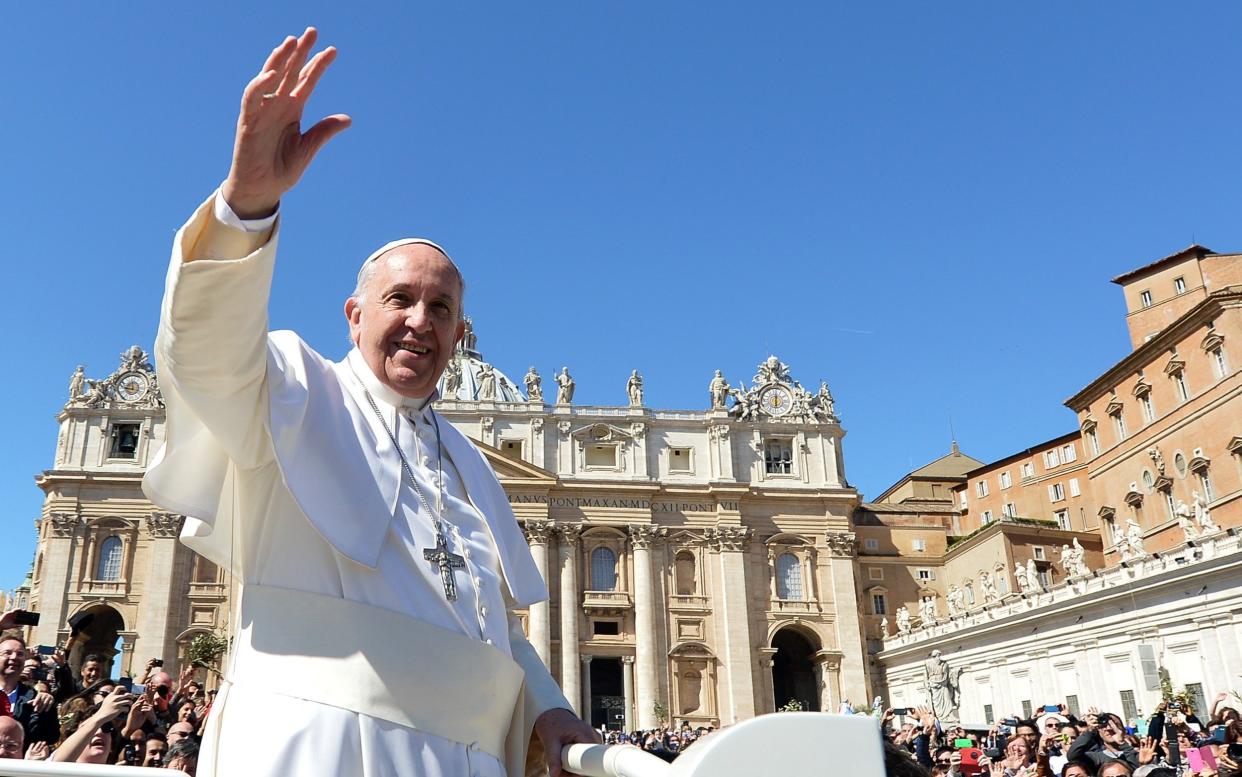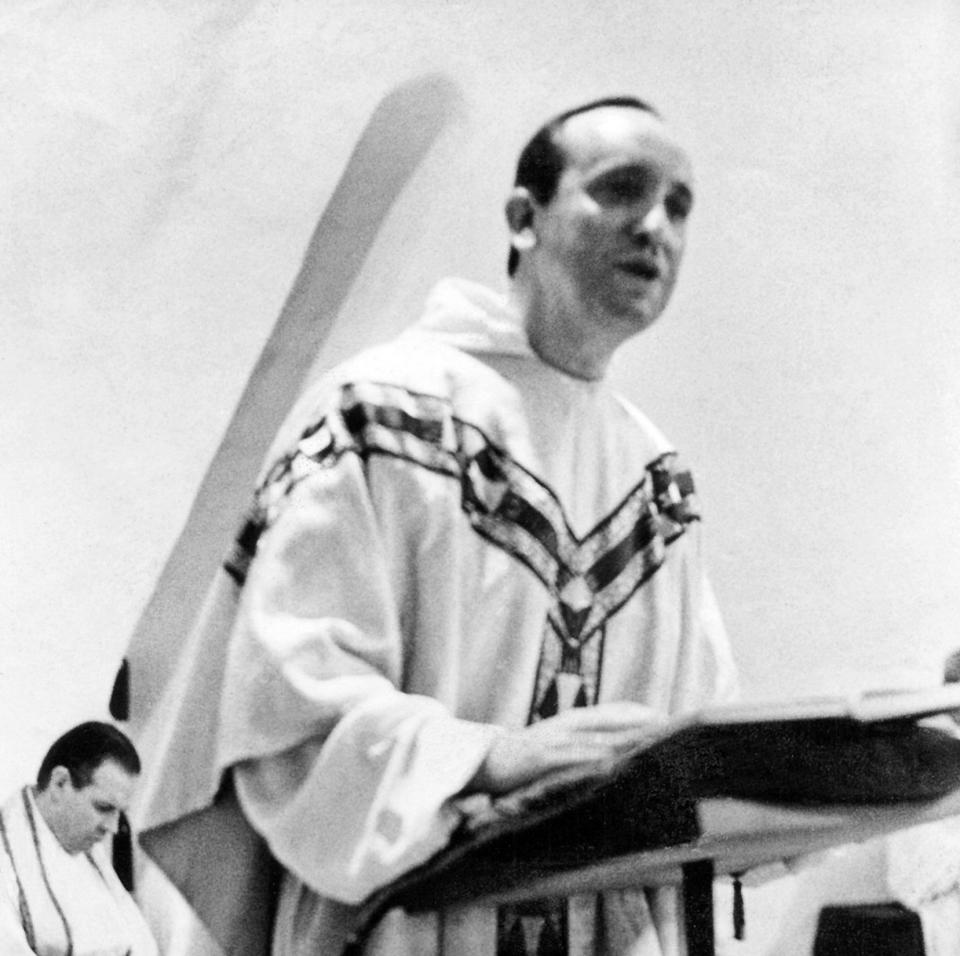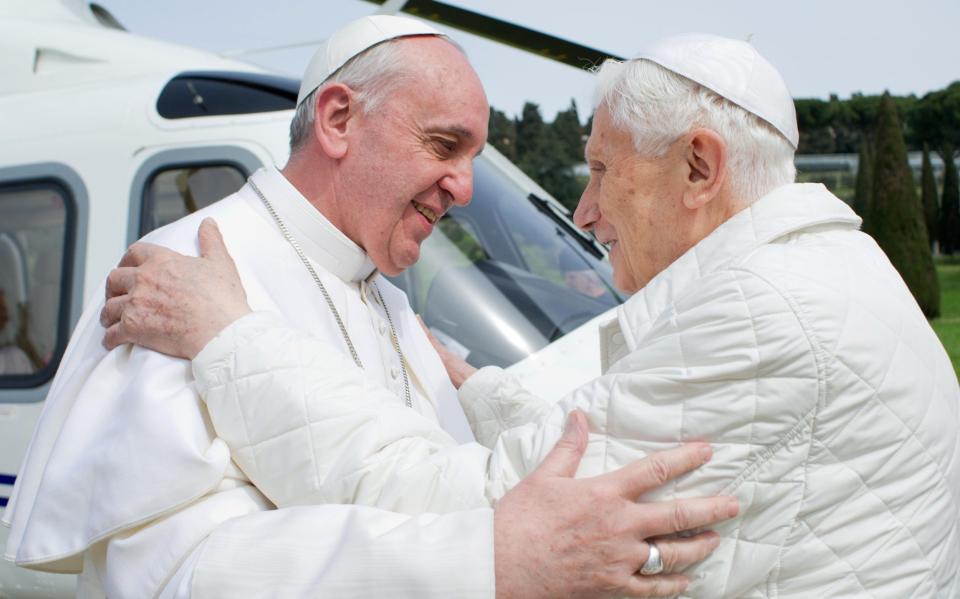The radical youth that still influences Pope Francis today

- Oops!Something went wrong.Please try again later.
The career of Jorge Bergoglio – Pope Francis since 2013 – resembles that of the Peter Sellers character in the 1963 Boulting Brothers film Heavens Above!. Appointed in error as vicar of a comfortable parish, he causes chaos by appointing a black dustman as his churchwarden and taking in a family evicted from their illegal encampment.
When Bergoglio was elected Pope, he took the name Francis, after the Poor Man of Assisi. He refused to move into the grand papal apartments or wear special red shoes, and set about transforming the Catholic Church into “a poor Church for the poor, a field-hospital Church, an outgoing, missionary Church”. This has caused friction, not least among those who are not poor.
Bergoglio’s radical Christianity brought more life-and-death encounters than in the comedy film. As a teenager, he had become the friend of a biochemist, Esther Ballestrino, at the lab where he worked. She was a Marxist and later a founder of the Mothers of the Plaza de Mayo, who protested in response to the “disappeared” in Argentina’s “Dirty War”. Bergoglio risked his life to remove incriminating Marxist literature from her home. In 1977, she was seized, tortured and dropped from a plane. In 2005, after her remains had been identified, he was able, as Archbishop of Buenos Aires, to see that she was buried in the grounds of the church from which she had been abducted.
What comes over in this series of autobiographical highlights, told to a 41-year-old journalist, Fabio Marchese Ragona, is how very Argentine Pope Francis is. He has tried to replicate in his humble Vatican rooms the simple life of his childhood in Buenos Aires, with a record-player still playing the tangos of his youth.
The book, also called Life in English in the Italian edition, matches 14 scenes in his life with world events (from the outbreak of the Second World War to the Covid pandemic). This brings home the length of his 87-year life, but is not particularly illuminating biographically – though it is interesting that he now discerns a “dispersed Third World War that has been convulsing the world for too long”. (The Malvinas get one passing reference, from the interviewer, in the context of Maradona’s “hand of God”.) But the Pope’s little homilies on historic events might be a bit offputting to the unconverted.

It certainly helps if readers know the outline of his life already. They might wonder why, having been put in charge of the whole Jesuit province of Argentina in 1973, he was “exiled as a punishment”, in his own words, in 1990 to Córdoba, more than 400 miles from Buenos Aires.
In explanation, the interviewer, in one of his linking passages, mentions a “charge, from within the Society of Jesus, of having ‘Salesianised’ the society’s education”. That is pretty obscure, but I think it refers to Bergoglio’s preference (in place of a Marxisant theory of liberation theology) for social action among the poor and sympathy for popular religious practices, such as processions and pilgrimages. So it was that during the Covid lockdown in Italy, Pope Francis performed a service alone in St Peter’s Square before the ancient icon of the Virgin Mary, Salus Populi Romani (“salvation” or “health of the Roman people”), and the “miraculous” crucifix from the Church of San Marcello al Corso, credited with ending a plague in 1522.
As well as being very Argentine, the Pope is very Catholic. That might go without saying, and it is no surprise, for example, to find him declaring, “I shall never tire of saying that abortion is murder.” But the Pope has annoyed some Catholics in Britain in two ways. One is clamping down on the old-fashioned Tridentine rite of Mass, which his predecessor Benedict XVI had only just confirmed as a valued variant of the liturgy. Francis’s move seemed narrow, considering his hospitable friendship with Eastern-rite Catholics, not to mention with evangelical Protestants and with Jews such as his friend Rabbi Abraham Skorka, with whom he regularly broadcast Bible discussion programmes.
The other vexatious move has been to countenance the blessing of cohabiting homosexual couples, while at the same time insisting that “there are absolutely no grounds for considering homosexual unions to be in any way similar or even remotely analogous to God’s plan for marriage”.

Since seeing “scenes of an adult nature” on television in 1990, the Pope has forsworn the gogglebox, not even (we learn) watching the Coronation of the King. In this he has followed Britain’s Sage of Robertsbridge, Malcolm Muggeridge, once the deputy editor of this paper, and as it happens, the man who provided the plot for Heavens Above!
In narrating the Pope’s snapshots, the translator Aubrey Botsford lets things flow smoothly, using moderate American diction: “Mom”, “gotten”, that sort of thing. But priests don’t “take” Confessions, they “hear” them; lay women don’t “celebrate” Mass. The Pope’s Latin motto, from our own St Bede, Miserando atque eligendo, is turned upside down as “Looking at Him with mercy and choosing Him” – as though a sinner were having mercy on God.
Life is published by HarperOne at £25. To order your copy for £19.99, call 0808 196 6794 or visit Telegraph Books

